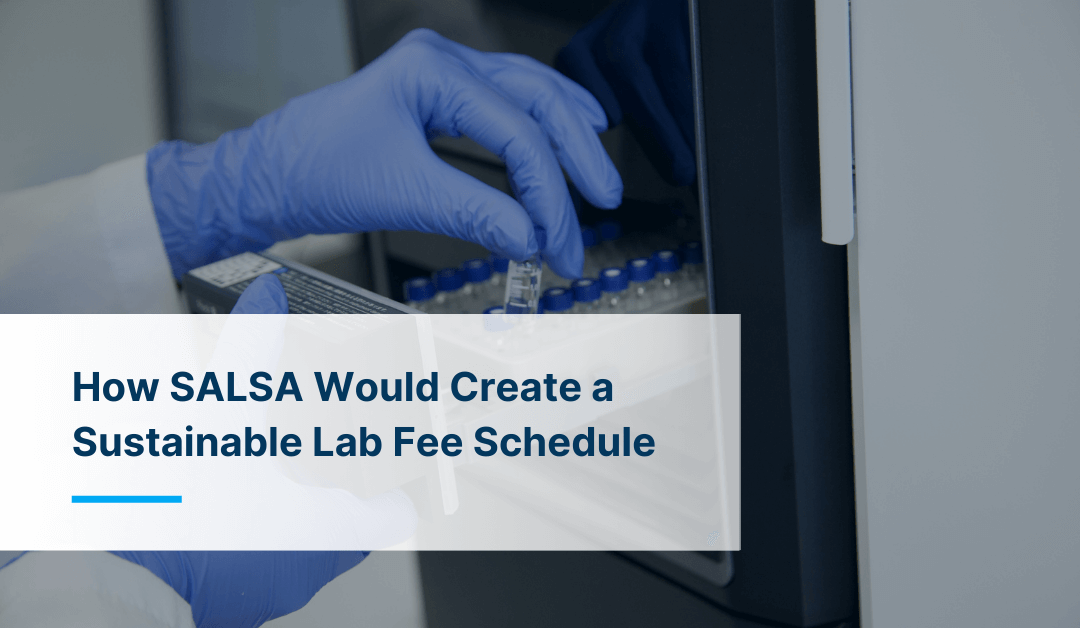Although clinical laboratories have experienced drastic Medicare rate reductions since the introduction of the Protecting Access to Medicare Act (PAMA) required them to begin reporting private payer data to Medicare in 2017, several pandemic-related delays in recent years have led concerns surrounding the law to be put on the backburner for many lab owners and decision makers.
However, with roughly 800 Clinical Lab Fee Schedule (CLFS) tests set to see reductions of up to 15% when the next PAMA reporting cycle begins on Jan. 1, 2023, clinical labs and their advocates are rallying around a legislative fix that would amend the currently flawed data reporting process.

Mick Raich, President of RCM Consulting, LLS
Introduced in late June, the Saving Access to Laboratory Services Act (SALSA) would require CMS to gather a more statistically representative sample of the entire lab market, as opposed to primarily drawing data from large national labs. It would also reduce the administrative burden on laboratories by requiring fewer laboratories to report private payer data and increasing the time between reporting periods from three to four years.
“The problem with PAMA is they didn’t look at all the labs in the nation when collecting their payer data,” says Mick Raich, President of RCM Consulting for Lighthouse Lab Services. “Instead, they only looked at select labs, with the data set skewed toward national labs, which have very, very low compensation rates.”
Raich adds that’s why it’s imperative labs throw their support behind SALSA before the next PAMA reporting cycle takes effect.
Fixes Proposed Under SALSA
SALSA, which has gained the vocal support of the National Independent Laboratory Association and American Clinical Laboratory Association, among others, would primarily introduce three major changes to the current PAMA reporting structure.
- Set caps for annual rate reductions and reduce reporting frequency:
SALSA would set annual limits on rate reductions and increases. Currently, PAMA limits how much a test’s reimbursement can be reduced each year in the first six years, but there are no limits on payment reductions in future years. This resulted in many tests seeing annual rate reductions of the maximum 15% during recent rounds of PAMA cuts.
The time between data collection periods would also be lengthened from three years to four.
- Draw from a statistically representative sample of the entire clinical lab market:
SALSA would require statistical sampling to gather private payer data from independent labs, hospital labs and physician office labs. A “widely-available test” is a test that is both performed by more than 100 National Provider Identifier (NPI) entities and has a Medicare reimbursement rate under $1,000. For tests that are not widely available CDLTs, all labs performing that test, above the current minimum revenue threshold, would report their market data to ensure an appropriate data set (the same as current law for these tests).
- Adjust information reported to CMS:
Under SALSA, Medicaid managed care rates would be excluded from required payer data since those rates cannot exceed Medicare rates by law. The law would also create the option for labs to exclude manual (physically mailed) remittances from reporting if these remittances do not exceed more than 10% of the lab’s claims.
“Including Medicaid Managed Care as part of these calculations was completely erroneous,” Raich points out. “It’s a good service to provide to the community, but at the same time, you can’t live at fifty percent of your rates at a higher volume of tests.”
Looking Ahead
While expressing support for SALSA to your local Congressional representatives in the coming months will be key to helping the bill advance, labs should also be preparing to understand whether they’re required to report under the existing PAMA structure should the new law not go into effect prior to Jan. 1, 2023. Under the current reporting structure, required labs who fail to report on time may face penalties of up to $10,000 a day.
- RELATED ARTICLE: Understanding whether your lab must report PAMA data
In the interim, Raich says it’s important labs and their revenue cycle management (RCM) teams continue to strategize for how to improve their billing and collection processes amid annual payment reductions from both government and private payers.
“We know Medicare is never going to offer us more money,” Raich acknowledges. “So, you have to keep innovating and make sure all aspects of your business are being handled in an effective and analytical approach.”
One such approach Raich recommends is exploring the use of artificial intelligence software to assist with improving your denial management. Additionally, it’s key for labs to be able to understand their RCM at an intimate level by being able to drill down on return on investment by specimen or case type.
If you’re seeking additional guidance on the Saving Access to Lab Services Act or PAMA, or would like to discuss improving your overall RCM strategy, contact us today for a free consultation.
